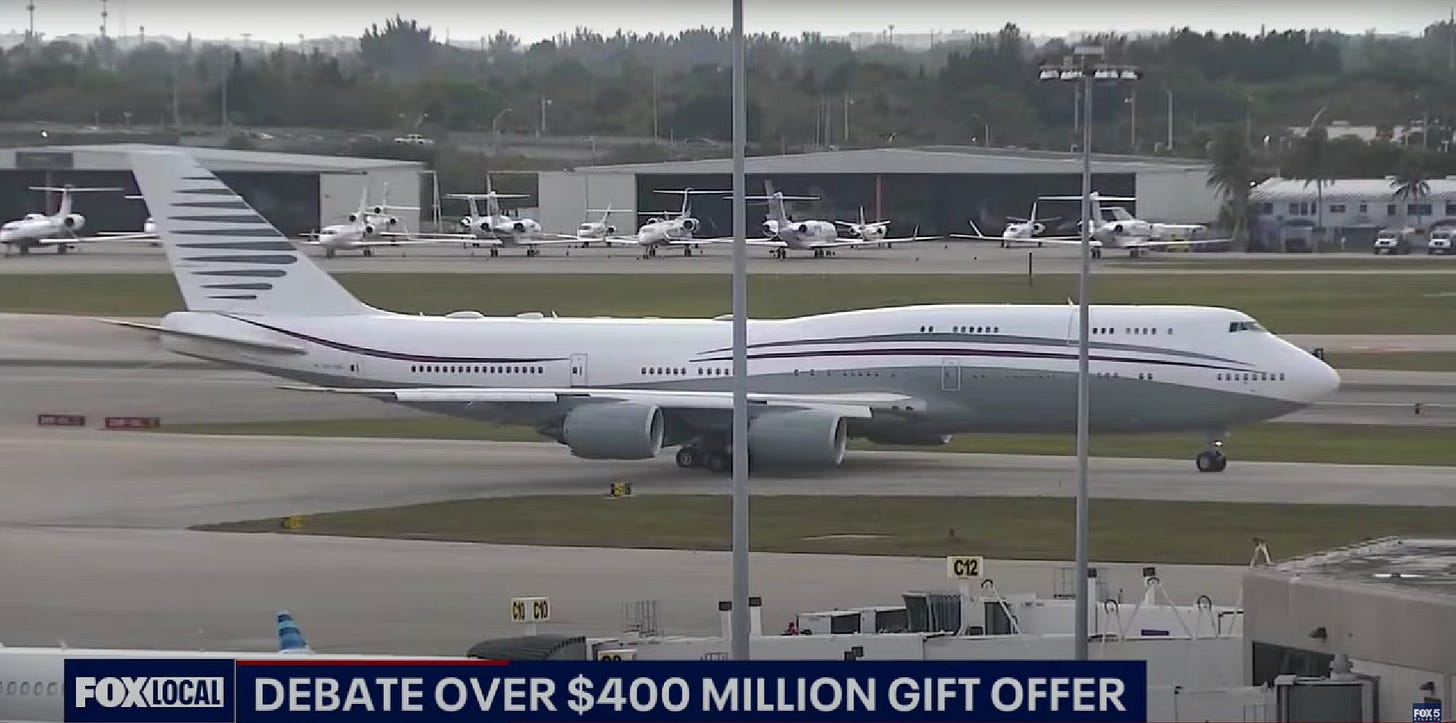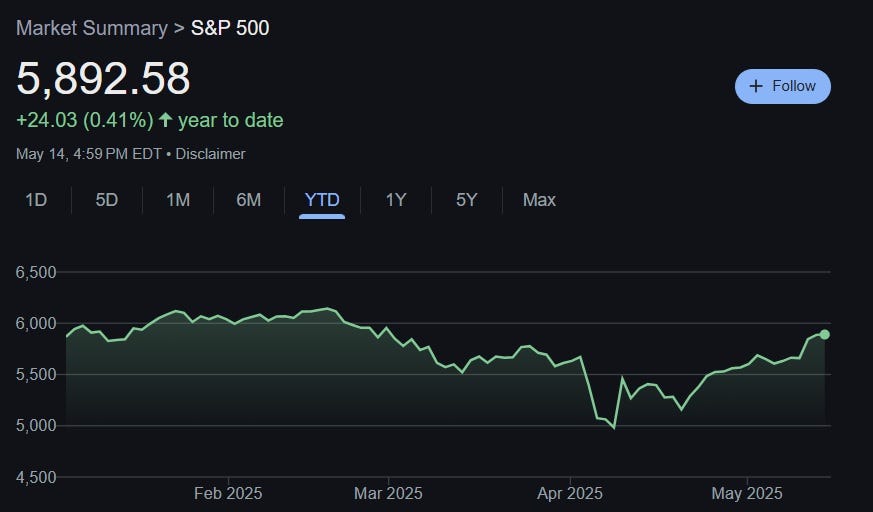America has become a laughingstock
This is no longer a serious country.
Back in 2022, the United States was showing surprising signs of strength, after a lot of people (myself included) had lamented its seeming decline. Seemingly against all odds, the Russian invasion of Ukraine had been partially halted and rolled back, with U.S. military aid providing a crucial and timely lifeline (U.S. intelligence also managed to correctly predict the invasion well in advance). The U.S. had come out of the pandemic looking a lot more competent than people had initially thought, with a generous and effective financial relief program and a world-beating vaccine development effort that the Chinese were unable to match. Inflation was high, but the U.S. labor market recovered quickly from the pandemic (and the following year, inflation began to fall as well). ISIS was a memory, defeated at low cost by U.S. intervention. Meanwhile, the transatlantic alliance was stronger than ever, and China’s economy was in the dumps after a real estate bust.
Once again, America seemed to have beaten the odds and resisted decline. Then two years later, in a spasm of anger over immigration and inflation and woke culture, Americans ignored this amazing run of success, threw out the Democrats, and brought back Donald J. Trump.
As of 2025, I’m feeling distinctly less optimistic than I was in 2022.
First, the good news. President Donald J. Trump has put a 90-day pause on most of his tariffs on China. Although targeted tariffs on China would have been helpful in securing America’s strategic industries, blanket tariffs just hurt U.S. manufacturing while threatening to cause a recession. So compared to the alternative, the pause is a good thing. Stock markets are certainly taking the news well:
A lot of investors seem to have been convinced — rightly or wrongly — that Trump’s tariffs are almost all talk and bluster, and that when push comes to shove he’ll back down before real harm occurs.
And Trump’s approval rating, while still a lot lower than when he took office, has rebounded a bit from its nadir:

OK, now for the bad news. Trump’s latest tariff pause is only a partial and temporary remedy for an economic problem he himself created out of thin air. It’s temporary because in 90 days we’ll be right back where we were before, and Trump will have to choose between pressing ahead with tariffs or doing another walkback. It’s partial because even after this walkback, U.S. tariffs are still higher than they’ve been in living memory:
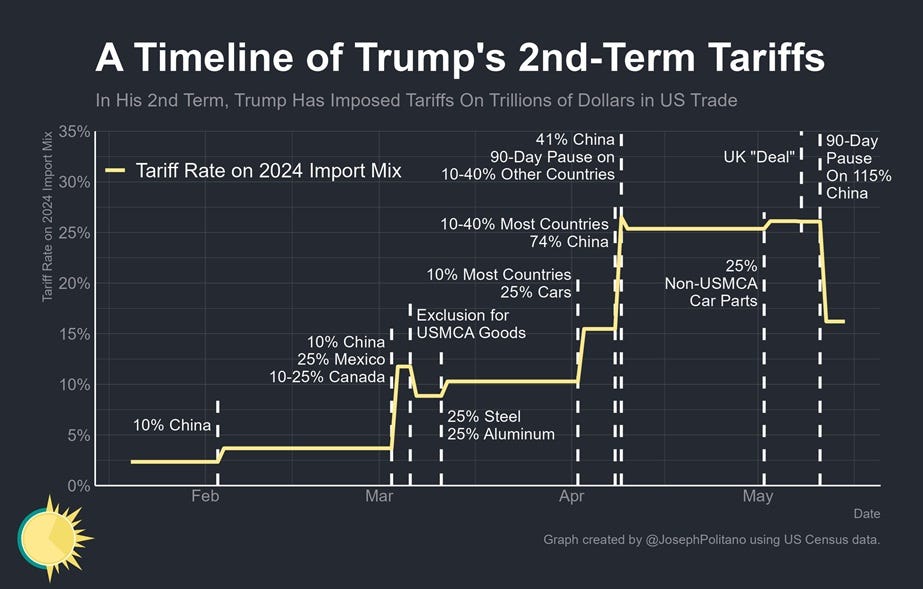
But in fact there’s more bad news. Trump’s seemingly never-ending series of rapid-fire tariff policy changes — by one recent count, there have been over 50 now — is still creating uncertainty. Trade policy uncertainty has gone up and down, but is still far higher than at normal times:
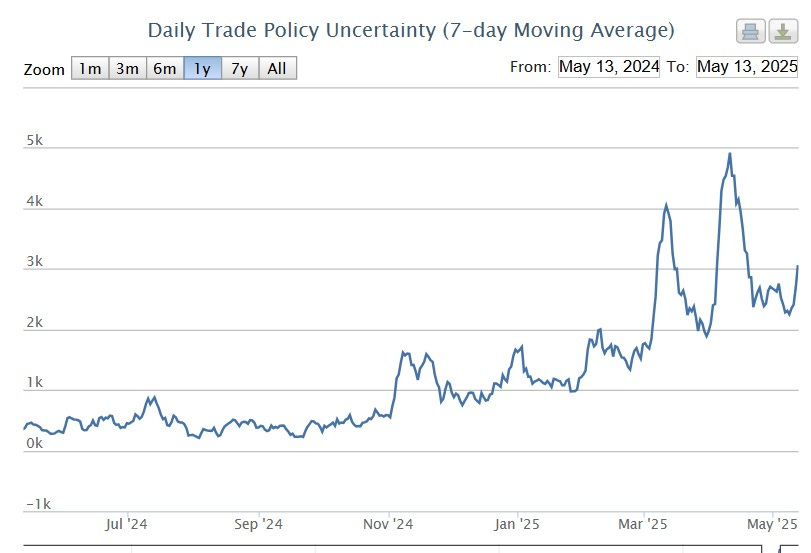
But beyond simple uncertainty, Trump’s willingness to announce big tariffs and then concede on them without major concessions from trading partners makes both him and the United States as a whole seem deeply unserious — an object of international ridicule. Here’s the WSJ on China’s reaction:
On Chinese social media, opinion leaders portrayed the tariff truce as a resounding victory for Xi…“China fought a very beautiful ‘counterattack in self-defense,’” said Ren Yi, a commentator who goes by the pen name “Chairman Rabbit,” in an online post. Beijing showed the world that Trump is irrational and America is a paper tiger, while China offers stability and certainty, he wrote…Xi has made a show of defying U.S. pressure and leaned into his self-styled image as a staunch steward of Chinese sovereignty.
Here in the U.S., Trump’s faithful react with adulation and praise to every daily reversal and walkback. But internationally, Trump just looks erratic and weak. Obviously, it was better for Trump to back down than to stay the course. But the fact that he made threats he couldn’t back up in the first place leaves America looking like a deeply unserious country; Trump’s move is being widely mocked throughout China.
And in fact, this is far from the only arena in which America is looking less like a colossus and more like a clown show these days. Other examples include:
America’s continued military and industrial weakness
Trump’s $400 million gift from Qatar and other likely cases of corruption
The U.S. government’s turn against vaccines
Chaos at the FAA
The pointless destruction of U.S. scientific and technical capacity
The pointless degradation of the transatlantic alliance
Incompetence at the Defense Department
Unfortunately, this meme pretty much sums up how U.S. tariff policy looks to the rest of the world:
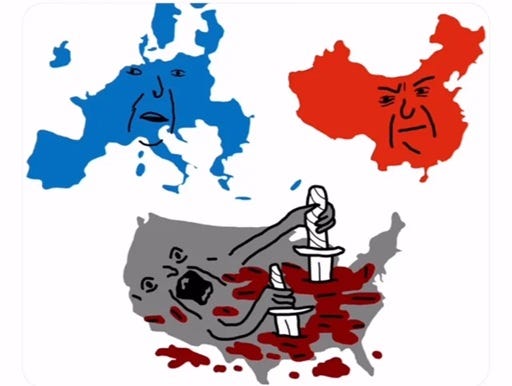
The campaign against the Houthis made America’s military a laughingstock
Keep reading with a 7-day free trial
Subscribe to Noahpinion to keep reading this post and get 7 days of free access to the full post archives.


